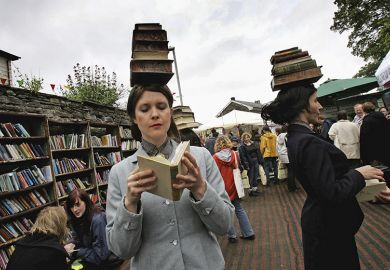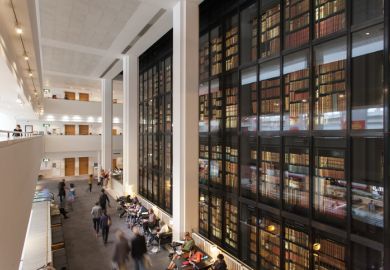In the mid-1950s, an economic historian called John Saltmarsh – a fellow and archivist at King’s – was asked to write a 10,000-word history of his favourite building.
A keen researcher with a deep interest in the Middle Ages, he plunged into the college “muniments” (or archives) and soon built up a manuscript out of all proportion to his brief. By the time he died in 1974, he had typed out about 220,000 words of text, although these were covered in notes and corrections.
Lodged in the college archives, Mr Saltmarsh’s unfinished manuscript was occasionally consulted by scholars and itself acquired something of the status of a treasure, but no one quite knew what to do with it.
In 2014, however, this year’s 500th anniversary of the completion of the chapel spurred King’s to publish it in full as a work-in-progress, not least because Mr Saltmarsh himself was notoriously prickly about any editorial interference.
Plans for the chapel were first drawn up in the 1440s according to instructions from Henry VI, whose statue stands in the college’s front court. It was inspired by a visit to Winchester Cathedral and always conceived on a vast scale – particularly to serve a college which then had only 20 scholars – although crises in the royal finances caused multiple delays. For several decades it stood partially built in the heart of Cambridge.
No one is sure how long Mr Saltmarsh spent poring over medieval contracts and building accounts, and deciphering the handwriting of long-dead clerks of the works.
Yet it enabled him to describe in detail how the stone was brought down the waterways from Northampton, timber from Ashdon Hales in Essex, and clunch (chalky limestone used as infill) from the Cambridgeshire village of Barrington.
He gives equally vivid accounts of many of the hundreds of men involved in building the chapel. He even found records of a single woman, Margaret Collens, who, he writes, “was in the rope and twine trade, and supplied the rope for the cart and the robinets, or hoisting tackle, and bottomed out the great sieves that were used for sifting lime”. The book also includes much information gleaned from fortnightly accounts of wages and payments for materials.
Somewhat eccentric, Mr Saltmarsh grew prizewinning sweet peas during his school days to avoid taking part in games and went on to spend his whole adult life at King’s. Yet he was also a keen public speaker who liked nothing better than showing students around Cambridge, the surrounding countryside and his beloved chapel.
John Saltmarsh’s King’s College Chapel: A History and Commentary, edited by Peter Monteith and Bert Vaux, is published by Jarrold Publishing and available from The Shop at King’s.
POSTSCRIPT:
Register to continue
Why register?
- Registration is free and only takes a moment
- Once registered, you can read 3 articles a month
- Sign up for our newsletter
Subscribe
Or subscribe for unlimited access to:
- Unlimited access to news, views, insights & reviews
- Digital editions
- Digital access to THE’s university and college rankings analysis
Already registered or a current subscriber?




